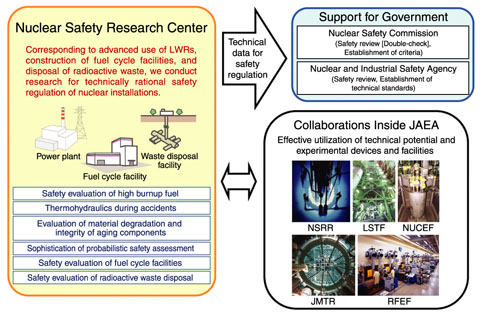
Fig.6-1 Main subjects, utilization of results, and collaboration for nuclear safety research
Advanced use of light-water reactors (LWRs) such as long-term fuel use (high burnup) and power plant aging management are required from the viewpoint of energy and environmental issues. The advanced use of LWRs must be promoted while confirming the safety of the reactors. The objective of our safety research is to provide scientific and technical data as the basis for regulatory judgments in safety reviews and in the establishment of safety criteria. We are conducting research into the safety of LWRs regarding high burnup fuel behavior under accident conditions, material degradation and the integrity of aging components, thermohydraulics during accidents, probabilistic safety assessment, safety of fuel cycle facilities, and radioactive waste disposal, according to the Prioritized Plan for Nuclear Safety Research produced by the Nuclear Safety Commission (NSC), as shown in Fig.6-1. Recent results in these subject areas are briefly described below.
For the study of the high burnup fuel behavior, valuable data were obtained on fuel failure under accident conditions (Topic 6-1) and on the thermal properties of high burnup mixed oxide (MOX) fuel (Topic 6-2). For the study of the integrity of aged components and materials, hydride precipitation, which would affect the dimension stability of the hafnium for control rods, was investigated (Topic 6-3). On the safe long-term service of the reactor pressure vessel (RPV), useful data on the embrittlement mechanisms of RPV materials were obtained from systematic observation of microstructural changes due to neutron irradiation (Topic 6-4). In addition, we performed residual stress analysis to evaluate the effect on the RPV integrity of weld-overlay cladding on the inner surface of the RPV (Topic 6-5). A new importance measure was proposed for identifying input factors that contribute to uncertainty in risk analysis output obtained from a probabilistic safety assessment, and a computer code was also developed to implement this new importance measure (Topic 6-6). Regarding thermohydraulics during accidents, the production of volatile iodine due to radiation chemical reactions was examined for better quantitative evaluation of the proportion of radioactive iodine released to the environment in the case of an accident with severe core damage (Topic 6-7). Relating to the safety evaluation of fuel cycle facilities, a new analysis method for criticality safety evaluation was validated and basic data were produced, which was reported in the revised data collection for the criticality safety handbook (Topic 6-8). For a reliable safety assessment of radioactive waste disposal, sorption data for radionuclides on rocks were obtained under disposal conditions (Topic 6-9).